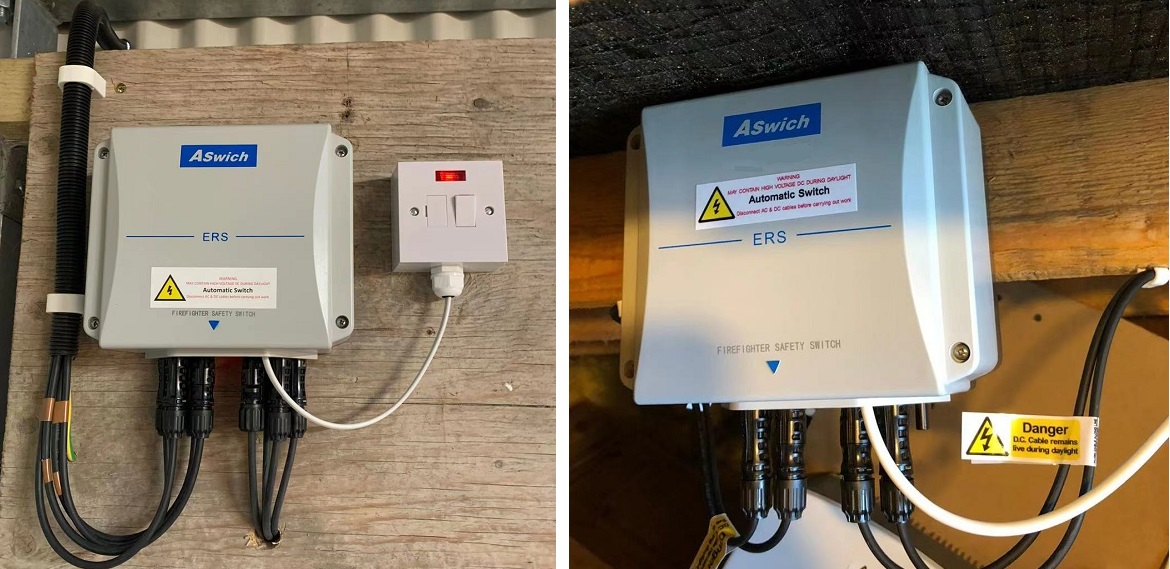First, you must understand that the PV system is separated into n two parts, the AC side and the DC side. AC stands for alternating current, while DC stands for direct current. The difference between these two lies in the alternating pattern, since AC has a continued period over time oscillating between two values, while the DC current is constant.
On a PV system the difference is marked by the inverter. On the output of this equipment there is the AC side that is connected to the grid and to your house, while on the input, there is the DC side.

How to Turn OFF Your Solar PV System
it is better to manually shutdown your inverter when it shows an error message or if you want to check all the switches are on or not. You can follow some simple steps if you wish to manually shutdown your inverter.
The first thing that must be done is to turn off the AC side.
In order to do this, you must go to the meter box and switch off the AC inverter main supply.
After that you must turn off the AC breaker. From that moment, your PV system will stop delivering energy to the grid.
1.Go through the Single Line Diagram of the System
A single-line diagram or SLD is a simplified blueprint that shows you how inverters, solar panels, power switchboards, and combiner boxes are connected. If you read through this layout, you will get a rough idea about how the solar PV system works and how each component is connected with the other.
2.Look for the Solar AC Distribution Board
Solar AC Distribution board is also known as Solar AC Combiner Box. You can easily terminate the AC output cable from the inverter using a circuit breaker and other inverters.
3.Switch the Inverter’s AC Breaker to the Off Position
Open the AC combiner box and locate the breaker that is connected to the inverter. Once you can locate this breaker by reading the labels, you can turn it to the off position. You must understand that the AC side is switched off first because it helps in avoiding the potential harm of unloading the high DC voltage of the solar arrays directly.
4.Now find the Solar Inverter
Once you have switched off the AC side, you would want to check if the actual inverter has stopped working or not. You can find the details of its location in the single-line diagram.
5.Switch the Inverter’s DC Switch To Off Position
Once you have located the inverter and read its labels, you need to verify if it has a DC switch attached to it or not. Generally, the DC switch is in-built in the body of the inverter. Sometimes, you may also find a separate DC isolator or isolator depending on the number of string inputs connected to the inverter. Once you can locate the DC switch or DC isolator, you can turn it to the off position and here, your job is done.
6.Special Considerations for Energy Storage Systems
However, some special consideration must be taken into account if you have purchased an off-grid or grid-tied with battery backup system. The difference mainly relates to the batteries.
If you have energy storage, then it is likely that the batteries will also have a DC breaker.
In this case, it is recommended that you turn off the DC breaker from the battery bank after disconnecting the DC breaker on the combiner box.
That needs to be done every time you want to do maintenance to the battery bank, or if you want to completely shut down the system. Turning off the DC breaker from the combiner box ensures that the PV system won’t keep injecting power to the load/grid. However, the battery bank will still be connected.
You must remember that in a grid-tied with battery system you will have an AC breaker to the connection of the main panelboard and you will have another AC breaker to the critical load to be backed up.
When you turn off the AC side, you must remember to turn them off both. Otherwise, the system will work on island mode and remain unsafe for you to work on.
By turning off the DC breaker from the battery bank, you completely ensure that the system will be totally out and that you will be able to safely access the batteries.

Rapid Shutdown System
To install a PV rapid shutdown system as a security measure against fire and as a quick and accessible way to bring down to zero all the components of the system and especially the modules themselves.
This is generally achieved by placing a box with a single button in an accessible place of the house (not on the roof as in the combiner box). Once you push that button you will disconnect the PV array from the electrical installation of the house.
That way you can avoid the need to climb onto your roof to turn off the DC breaker, which in the case of an emergency could be crucial time lost.
Aswich has been one of the most innovative manufacturers of switches, AC and DC isolators Rapid Shutdown and accessories. Aswich’s products are designed to meet the highest safety requirements and performance standards whilst being environmentally-friendly.
